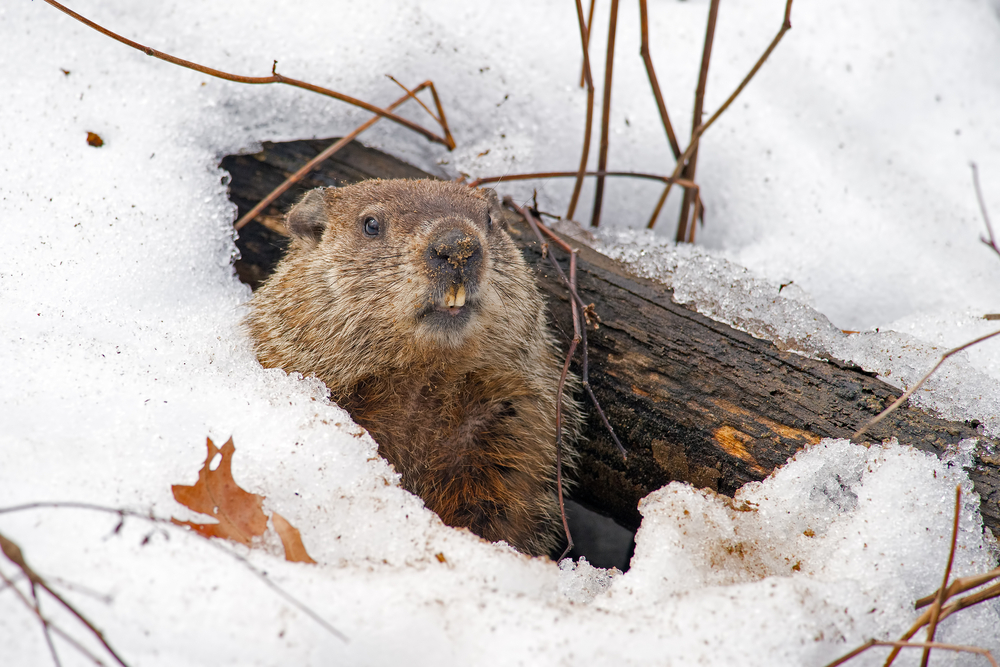This coming Thursday is Groundhog’s Day. So here are a few interesting facts about Groundhogs.
Groundhogs are also known as Woodchucks. The name “Woodchuck” has nothing to do with wood at all. It is based on the Native American word for them which is “Wuchak.” Groundhogs (Marmot monax) are not related to hogs at all, but are closely related to squirrels! They are basically a giant ground squirrel. They’re widely distributed across North America even as far north as Alaska. They weigh up to 13 pounds and are about two feet long. Our gray squirrels, on the other hand, weigh around one pound.
They truly hibernate over the winter. They go into a deep sleep in mid to late October until late winter/early spring. Their body temperature falls from around 99 degrees to around 40 and their heart rate slows from around 80 beats per minute to around five. The males usually wake up first—so they can “sniff out” the females’ burrows.
Although groundhogs typically live anywhere from six to eight years, tradition says that Punxsutawney Phil drinks a magic elixir to prolong his life.
Boy, Can They dig!
A woodchuck can dig an impressive burrow—from eight to over fifty feet long! They even have separate bathroom areas! Big burrows often get used by other creatures—foxes, coyotes, chipmunks, even possums.
Woodchucks eat mostly plants, although they will also eat insects, even bird eggs.
Because groundhogs are solitary creatures, the average homeowner may not have to deal with them at all or will have to deal with one or two at the most. You can set out cruelty-free traps with suitable bait (usually fruit), checking traps every day so as to minimize stress on the animal if you catch it, and simply let it go elsewhere.
Repellents are also very effective—use any repellent labelled to repel moles and/or voles. If you actually see an entrance to their burrow, you can “flood” them out with a hose, then put the repellent down to keep them from returning.
So How Did They Get Associated With Predicting Weather?
Germanic traditions of Candlemas Day (February 2nd) had a badger or hedgehog predicting weather. When our ancestors came to America, there were no badgers or hedgehogs so they apparently picked an animal close in size.
So how good are they are predicting weather? According to stormfax.com, Punxsutawney Phil is only right 39% of the time. Me? Well, I guess I’ll stick to weather.gov!

